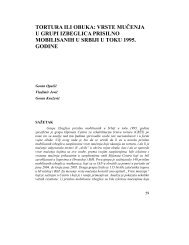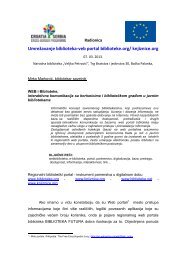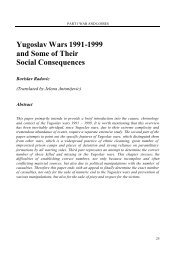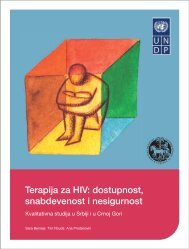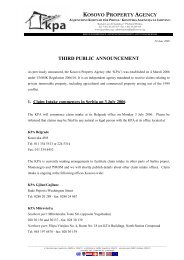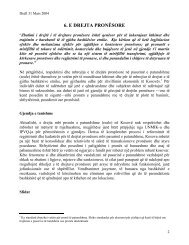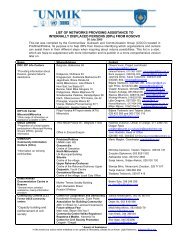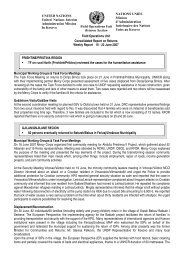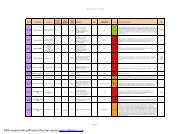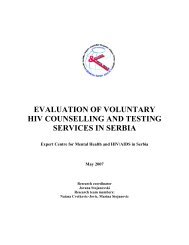Download book (PDF file 742 kB) - IAN-a
Download book (PDF file 742 kB) - IAN-a
Download book (PDF file 742 kB) - IAN-a
You also want an ePaper? Increase the reach of your titles
YUMPU automatically turns print PDFs into web optimized ePapers that Google loves.
If we considered the data on mental health status obtained from<br />
the samples of the PrIDP population two years ago and now as<br />
relevant records of changes, then we could say the following about<br />
the mental health status of the PrIDP population:<br />
As can be seen from Graph 3, the current psychological<br />
health condition (in comparison with the period before the<br />
exile) is relatively more frequently self-perceived as "much<br />
worse" (28,9%) or "somewhat worse" (38,4 %) in the 2002-<br />
sample than it was the case in the 2000-sample ("much<br />
worse":19%; "somewhat worse":32,8 %)(Sample by Current<br />
Psychological health Self-Perception: Chi square = 40.15, df<br />
=5, p < 0.001).<br />
While in the 2000-sample 26% examinees felt the need to talk<br />
with a professional about their own psychological condition,<br />
35,8% of the examined IDPs in the 2002-sample have this<br />
need (Sample by Felt need to talk with professional: Chi<br />
square = 22,92, df =4, p < 0.0001). In the 2000-sample, the<br />
number of the examined PrIDPs who, at the time when the<br />
research was conducted, had the need for professional help<br />
due to psychological difficulties rose by 19,4% compared to<br />
the time before their displacement. In the 2002-sample<br />
number of the examinees who felt the need for professional<br />
help when the research was conducted due to psychological<br />
difficulties rose by 25,9% in comparison to the time before<br />
their displacement. Although this difference is not great, it still<br />
represents a clear sign of deterioration of the mental health of<br />
the PrIDP population.<br />
As regards the use of tranquillizers, compared to the period<br />
before the exile there is almost no difference between the<br />
PrIDPs from the 2000-sample and those from the 2002-sample<br />
(Sample by Change in tranquillizers use: Chi square = 6,26, df<br />
=3, n.s.). The percentage of the examinees from the 2002-<br />
sample that started taking tranquillizers in exile is very close<br />
to the percentage obtained on the 2000-sample (2000-<br />
sample: 24,4%; 2002-sample: 21,2%). Also, the greatest<br />
number of the examinees (2000-sample: 60,5%; 2002-<br />
sample: 66,5%) neither used tranquillizers before the exile nor<br />
uses them now, while a considerably lower percentage of them<br />
(2000-sample: 12,6%; 2002-sample: 11,3%) keeps using<br />
tranquillizers. Number of the PrIDPs who stopped using<br />
tranquillizers in exile is negligible (2000-sample: 2,5%; 2002-<br />
sample: 1%).<br />
18



